
The International Youth School “Prijedor24” brought together 20 young people from Bosnia and Herzegovina (BiH), Europe, and around the world. The aim was to allow students to learn about BiH’s past based on court-established facts. Moreover, students were encouraged to develop a commitment to building a culture of remembrance, advocating for justice, and fostering reconciliation.
The Post-Conflict Research Center and the Sarajevo Memorial Center organized the International Youth School “Prijedor24”, in Prijedor. Participants visited the largest mass grave of the Bosnian War (1992-1995), Tomašica, in which over 435 bodies were buried by Bosnian Serb forces. Students also visited the infamous Trnopolje concentration camp, and joined the commemoration of White Armband Day, paying tribute to the 3,176 Prijedor residents who were killed in the war. They also attended the International Conference on Detention Camps in Bosnia and Herzegovina, where local and foreign journalists, experts, scholars, and survivors of the camps from Prijedor, Foča, Mostar, Bratunac, and Sarajevo spoke about the use of camps as a method of “ethnic cleansing” in Bosnia and Herzegovina.
Ahmed Kulanić, Director of the Sarajevo Memorial Center, emphasized the importance of educating young people about historical events during the opening of the “Prijedor24” school. He highlighted the contribution of such initiatives to preserving collective memory and understanding the past. “Our mission is education and the preservation of historical facts. We are pleased to see young people interested in learning about our past, and we hope this school will become a tradition,” said Kulanić.
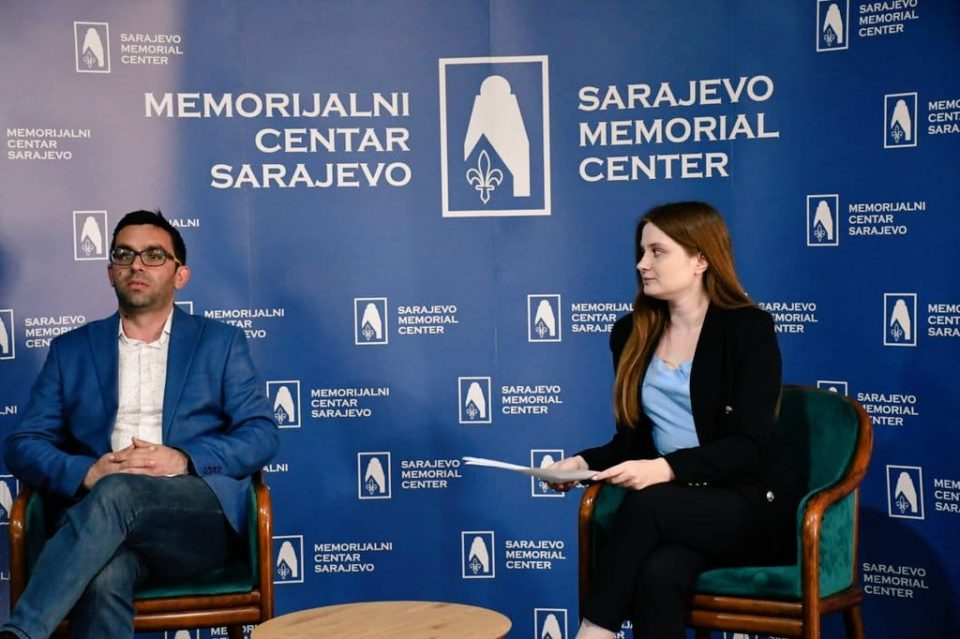
Amina Sejfić, Project Manager at the Post-Conflict Research Center, explained that understanding the crimes committed in Prijedor is crucial for several reasons. Reflecting on the devastating consequences of hatred and intolerance, she said they serve as a powerful lesson on the importance of human rights and justice.
“Learning about these crimes fosters empathy and a commitment to preventing future atrocities. It ensures that the memories of the victims and survivors are respected and that their suffering is not forgotten. Young people are the architects of tomorrow. By providing them with a comprehensive education that emphasizes critical thinking, empathy, and the value of human dignity, we equip them with the tools needed to build a more just and peaceful world,” added Sejfić.
Participants of the “Prijedor24” school visited the Tomašica mass grave, led by Jusuf Arifagić, President of the Kozarac Camp Detainees Association, and survivor Ibrahim Kahrimanović. The Tomašica mass grave was discovered by Bosnian authorities in 2013 at the Tomašica mine site, about 20 kilometers from Prijedor.
Evidence Reveals Unspeakable Horrors
Arifagić and Kahrimanović explained the vastness of the area where the human remains were found and how enormous amounts of soil were brought in to conceal them. According to testimonies, significant manpower and the use of machines were involved in transporting, burying, concealing, and relocating the mortal remains of the killed residents of Prijedor.
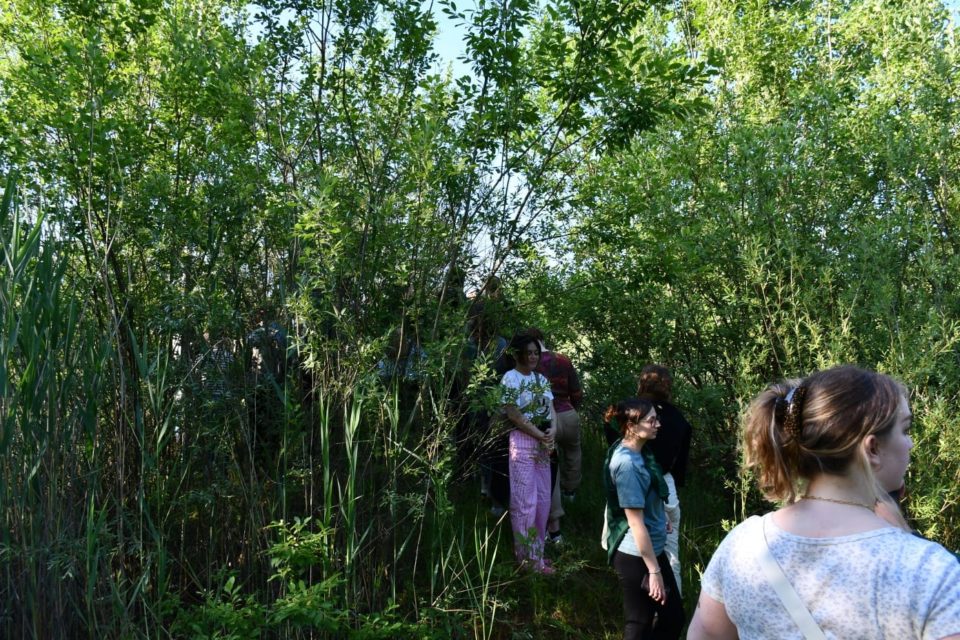
The remains of the victims exhumed from the Tomašica grave were killed in camps such as Omarska, Keraterm, Kozarac, Hambarine, Čarakovo, Zecovi, Bišćani, as well as in the city of Prijedor.
The remains from the Tomašica grave were then relocated to the secondary mass grave site at Jakarina Kosa. Over 800 bodily remains were exhumed from Tomašica and Jakarina Kosa.
Judge Graciela Gatti Santana, President of the International Residual Mechanism for Criminal Tribunals (IRMCT), stated that extensive evidentiary materials presented before the International Criminal Tribunal for the former Yugoslavia (ICTY) show that, within the camps in Prijedor, detainees were subjected to unspeakable horrors, including beatings, rape, sexual violence, torture, executions, as well as abuse, humiliation, and psychological torment.
Furthermore, as Santana noted, the evidence has shown that camps such as Omarska, Keraterm, and Trnopolje, among others, were part of a broader plan of “ethnic cleansing” aimed at civilians of Bosnian Muslim and Bosnian Croat origin.
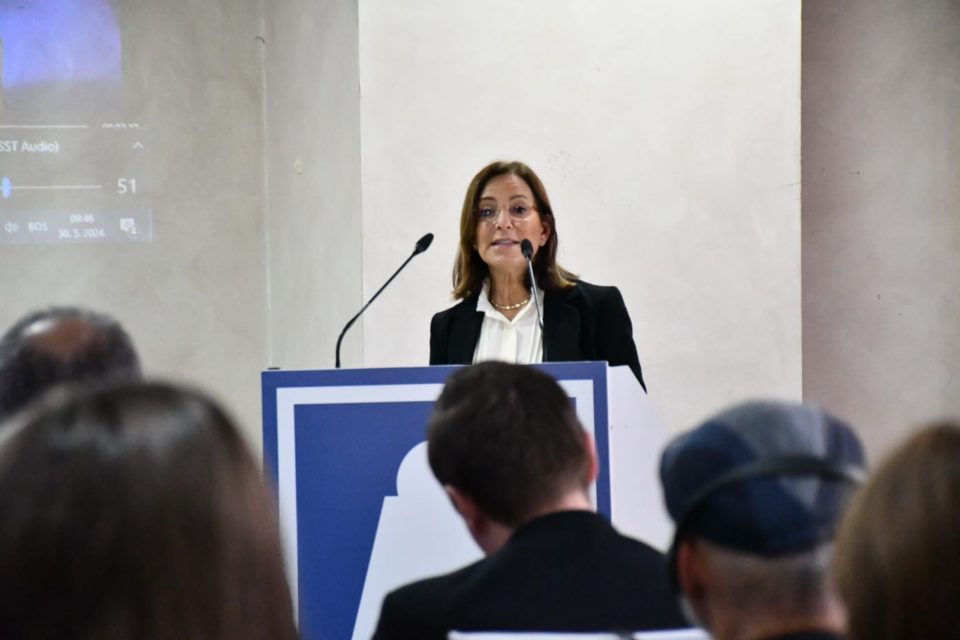
“The ICTY concluded that the establishment of these camps was the result of deliberate discrimination against the non-Serb population. It also concluded that the camps operated as part of a joint criminal enterprise. Thus, camp personnel, military officials, and political leaders, through coordinated efforts, contributed to the overarching joint criminal enterprise aimed at the forcible removal of the non-Serb population from the municipality of Prijedor,” said Judge Santana during the International Conference on Camps in Bosnia and Herzegovina.
She emphasized the importance to recognize that people of all ethnicities were victims of atrocities in detention camps in Bosnia and Herzegovina.
The International Conference on Detention Camps in Bosnia and Herzegovina was organized by the Sarajevo Memorial Center and the Kozarac Camp Former Detainees Association. Speaking on behalf of the Kozarac camp detainees, Jusif Arifagić stated that the conference should contribute to ending all divisions that exist among the people of Bosnia and Herzegovina, and that “the three [separate] histories that are being written, through such scientific gatherings, should cease to exist.”
“We need our shared victories,” added Arifović. He remains hopeful that conferences like these will contribute to the truth that is essential for future generations and lasting peace.
Kulanić emphasized the importance of the work of the ICTY, later the Mechanism, stating, “we can speak about truth based on facts”.
Elmedin Konaković, Minister of Foreign Affairs of Bosnia and Herzegovina, also attended the conference on detention camps in BiH. He expressed his gratitude and reiterated the immense importance of the presence of students who have come to learn, understand, and discover through scientific and academic discussions what happened in this region in the 1990s.
Participants of the “Prijedor24” school also visited the Trnopolje camp, where women, children, and men were detained. Arifagić explained how the detention rooms were overcrowded with people and often completely covered in human blood.
According to the Hague Tribunal data, approximately 23,000 detainees passed through the Trnopolje camp. It is also known for the image that made the front cover of Time, depicting detainees behind barbed wire, including Hague witness Fikret Alić. The camp had first been revealed by British media on August 5, 1992, when they took photographs of emaciated detainees. Many of these detainees were taken from the Trnopolje camp and killed, including those killed at the Korićanske Stijene on Mount Vlašić. According to court rulings, around 200 detainees were taken and killed at the Korićanske Stijene.
“We are Building a Path Towards Reconciliation”
In front of the Trnopolje camp, an exhibition “Walls” by Nidal Šaljić has been opened. It features 27 photographs taken at former camp sites and places of detention, including images captured in Višegrad, Bratunac, Foča, Prijedor, and other locations in BiH. Šaljić states that it is a highly important piece of Bosnian-Herzegovinian history.
He expressed gratitude to the students who attended the exhibition opening, sending a message to younger generations not to give up on learning and studying history, as only through truth is it possible to create and nurture a culture of collective memory.
“I believe it is crucial to remind the public of the crimes, so that they are aware of everything that happened, to be informed and acquainted with that segment of our history, which is painful and horrifying,” said Šaljić, whose exhibition, “Walls”, is his first solo exhibition and part of a large project in which he will strive to archive all remaining former detention camps in Bosnia and Herzegovina.
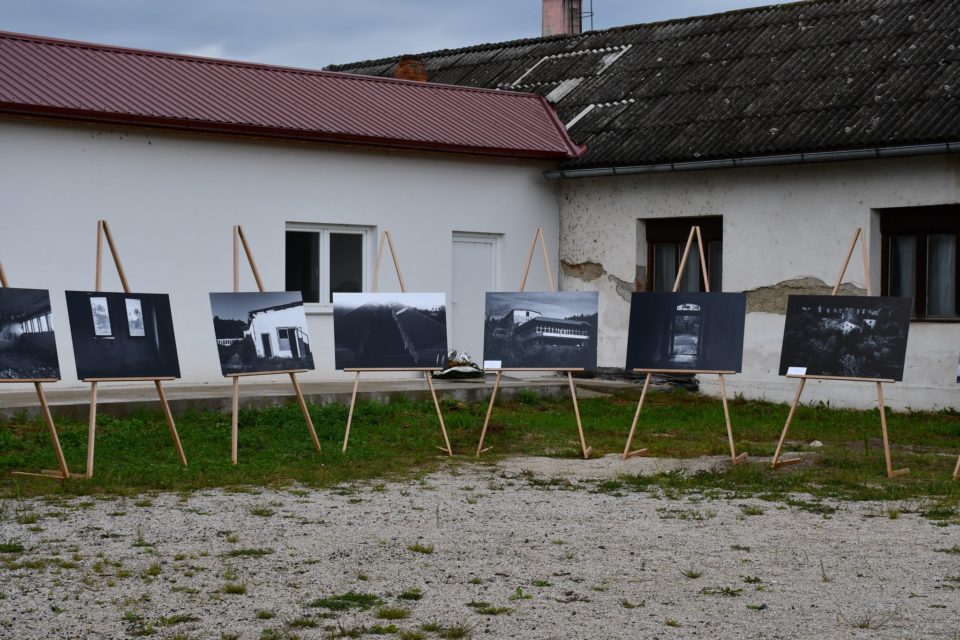
The exhibition of 27 photographs is part of the 6,000 photographs Šaljić has taken across Bosnia and Herzegovina.
Omer Osmanović, Minister for Veterans’ Affairs of the Sarajevo Canton, also attended the detention camps conference. He stated that through art and memory, such as the exhibition “Walls”, we not only remember the past but also build a path towards reconciliation.
“Reconciliation is not a simple process. It requires the courage to confront painful memories, the willingness to forgive, and the determination to build a better future for all of us. We must acknowledge and respect each other’s pain and work together to build a society based on peace, justice, and mutual respect, which is the key to lasting peace and stability in the region,” said Osmanović, adding, “may the past always remind us of the importance of peace, and may the future be bright and full of hope for all of us.”
Attending the “Prijedor24” school was truly a moving experience for participant Juliette Danjon from Canada. Danjon emphasized to her colleagues that the school has allowed her to understand the reality of war and its consequences beyond the classroom. Visiting sites of mass atrocities, meeting survivors, and the scientific community has provided her with invaluable insight into the various aspects of the conflict.
“From the crucial role journalists played in documenting the truth, to the resilience and strength of survivors, I have fully come to understand the importance of collective efforts to preserve the memories of those who suffered and to ensure that these events are never forgotten,” said Danjon.
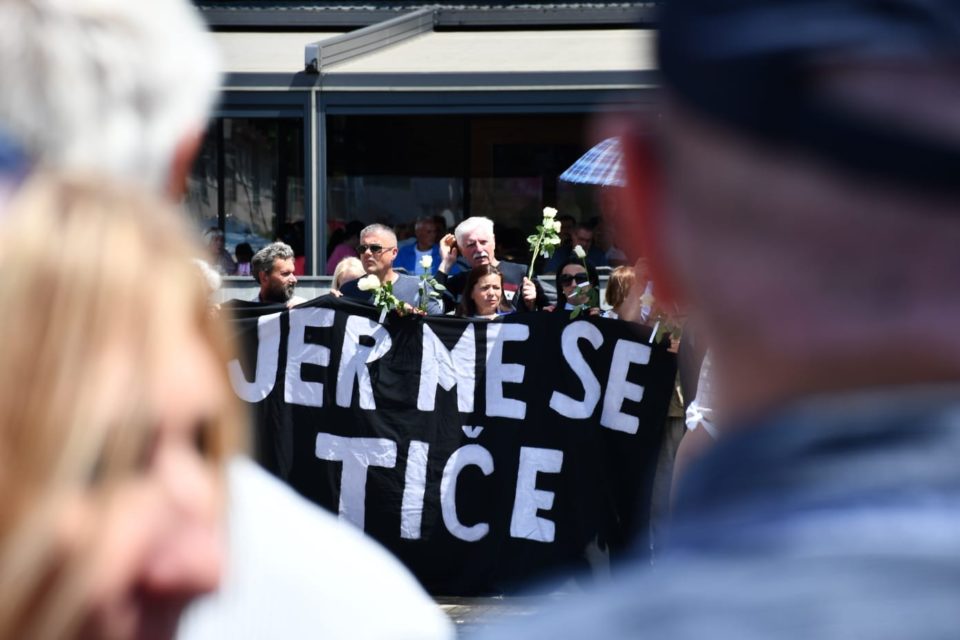
Participants of the “Prijedor24” school joined the commemoration of White Armband Day, remembering when non-Serb residents were forced to wear white armbands as a means of forced identification. Over time, white armbands have become a poignant symbol of Prijedor’s suffering. While laying flowers for the 102 children killed in Prijedor, organizers reminded participants of the impossibility of erecting a memorial due to the lack of consent from the Republika Srpska authorities.





